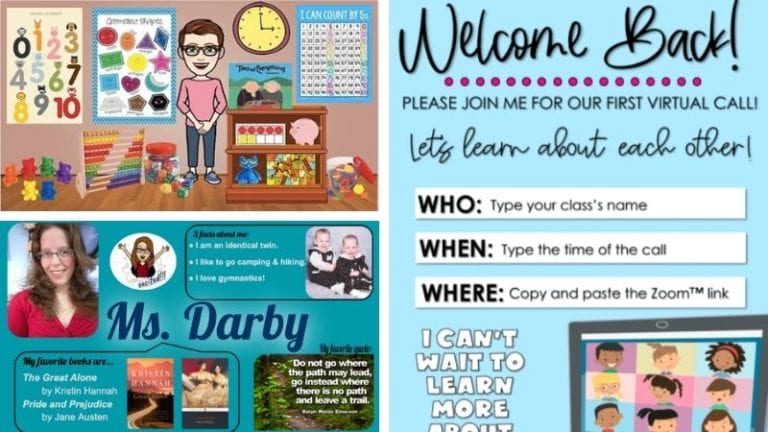Wyatt, a dark-haired kindergartener, carefully pushes his doll into a highchair. Consulting a list on the wooden table next to him, he announces, “It’s time for lunch!” He takes a bowl and spoon from the shelf and says, “Please eat your food, baby!” While this might seem cute behavior to the untrained eye, it is really social and cognitive learning to an educated professional. Wyatt is learning how to care for others, empathize, and follow a predictable schedule. This kind of practice is critical to early childhood development.
Unfortunately, as we’ve shifted academic benchmarks to the lower grades, young children in school have lost their dress-up closets, play kitchens, and dolls. And that’s a mistake because children need to play. Play is an essential part of their development and learning. In fact, play is learning. Even in schools without play-based kindergartens, teachers are finding time for learning through play—during indoor recess, at the end of the day, or on Fridays.
So bring back dolls in kindergarten classrooms—they belong there, and we’ll prove it.
All those caring and nurturing skills? Those are the building blocks of empathy. Playing with dolls in kindergarten classrooms can help a child understand that other people have feelings and motivations. Assuming various roles is an important step toward perspective-taking.
Social skills practice: “You’re not the daddy. I’m the daddy.”
When children play house, they learn kindness and cooperation because they have to work together to take care of everything. They also engage in helping behaviors, like giving bottles and putting babies to bed. As they determine roles, they have to negotiate with peers about who gets to be the parent and who is relegated to kid status.
And that matters even more than letter and number recognition. A University of North Carolina at Greensboro study found that pro-social behaviors “positively predicted academic success.”
Taking responsibility: “Time to change your diaper!”
Kindergarteners can tuck a doll into a crib, give them a pretend bath, or soothe them in a rocking chair—and these activities develop nurturing skills. Kindergarten teacher Megan Sletten says, “I think dolls are important to have in a classroom because it helps to teach the students how to take care of something.” And students who take care of a doll’s needs will hopefully be students who contribute at home, in the classroom, and in their communities.
Developing empathy: “She looks sad. How can I make her happy?”
All those caring and nurturing skills? Those are the building blocks of empathy. Playing with dolls in kindergarten classrooms can help a child understand that other people have feelings and motivations. Assuming various roles is an important step toward perspective-taking. For example, when a student plays mom or dad, they may internalize the stressful aspects of parenting. “I can’t decide what to make for dinner,” a child might say to her doll. They may also understand how frustrated a toddler gets before they can talk because they have needs they can’t communicate.
Empathy isn’t just a “soft” skill. It’s helpful for combating bullying behavior and moving students from bystanders to upstanders. And it’s absolutely essential for relationships, work, and overall success in life.
Learning self-care: “Your shirt is on backward.”
Dressing a doll is great practice for dressing oneself. Zipping and buttoning doll clothes helps strengthen the muscles of the hand. The fine motor skills learned in self-help practice will also help them hold a pencil correctly. We hear you, teachers, when you say it’s becoming harder and harder to develop these skills. Turns out, small skills like buttoning a jacket also boost a student’s overall sense of independence.
Play is an essential part of development and learning. In fact, play is learning.
Stimulating communication: “It’s not your turn with the blocks.”
When students and their classmates play dolls in kindergarten, they engage in even more oral language practice. Oral language provides the foundation for literacy. In fact, it is the cornerstone of effective communication and proficient reading. Kindergarten teacher Susie Thornburg says, “I think it’s really important to encourage the imaginative play to help them develop language skills. They learn problem-solving and conversational skills. It’s amazing how much I learn about them through their play.”
Pro tip: try adding paper and pencil to the house area and now you’ve added literacy practice.
Providing mirrors: “She looks just like me!”
When classroom dolls are diverse, they allow children to see themselves reflected in the school curriculum. Having their identities validated in this way promotes a sense of belonging in the classroom. And that feeling of inclusion? It’s a precondition of learning. Thornburg says, “I’ve always made sure that my dolls represent as many ethnic backgrounds as possible. It was really sweet when I brought in some new diverse dolls. One student even said, ‘This one looks like me!’”
Encouraging creativity: “This town ain’t big enough for the two of us.”
Dramatic play is highly beneficial for students, and there is an infinite number of scenarios they can imagine. A 5-year-old might just as easily cast their doll in the role of Woody in Toy Story as play a teacher instructing students. No one directs them. There are no right or wrong answers. The possibilities are endless.
It is this kind of play that is essential in early education, where the focus is too often on discrete academic skills. Free play actually provides the prerequisites (think: memory, symbol recognition) for more sophisticated learning later on. It also promotes the type of creative thinking they’ll need to solve complex problems.

